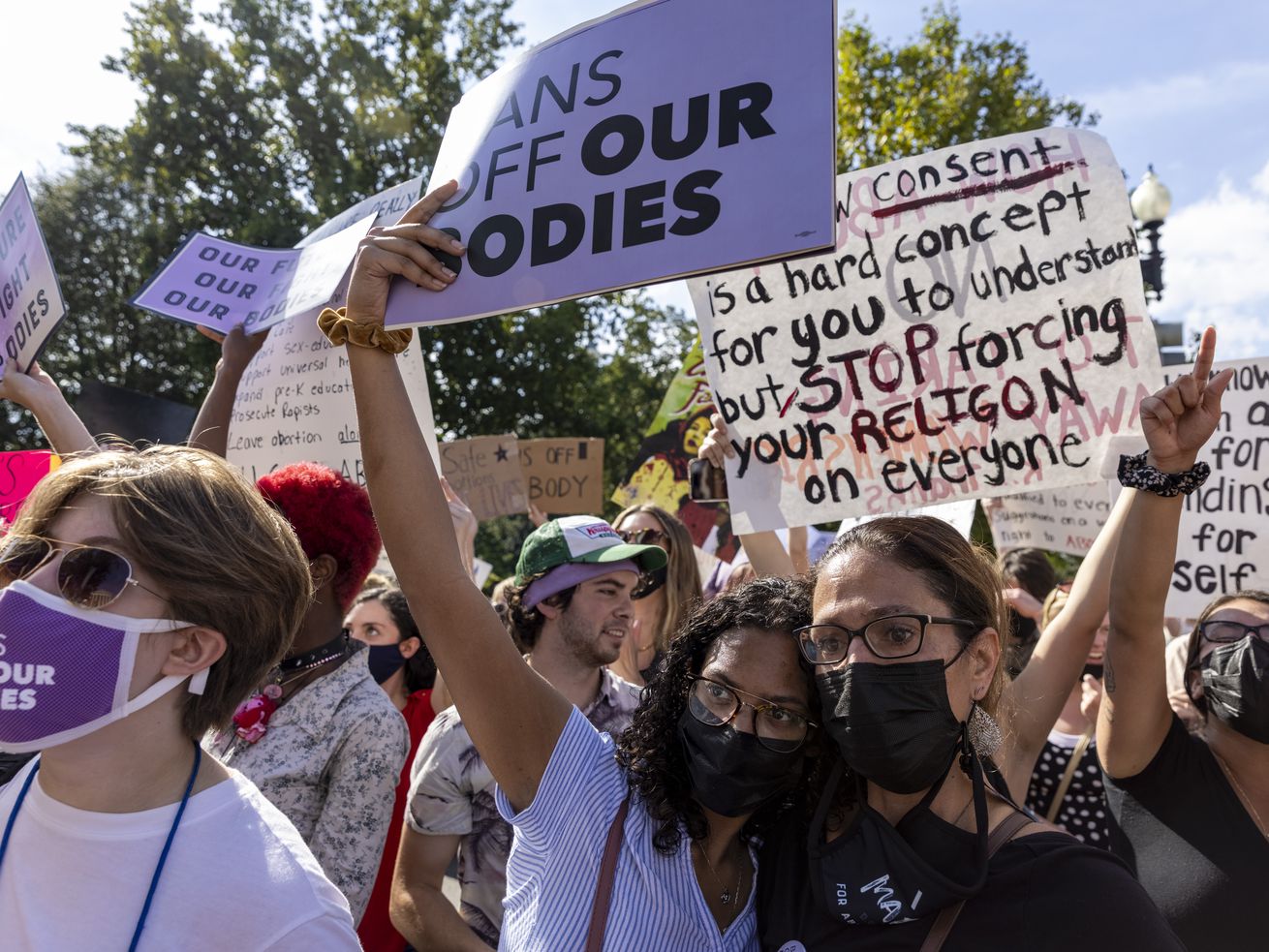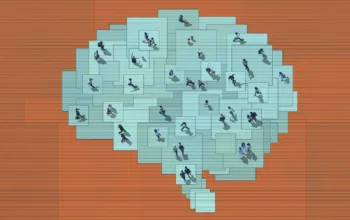The Court still won’t stop Texas from banning abortions, but it wants to bring this saga to a final resolution quickly.
The Supreme Court handed down a pair of very closely related orders on Friday concerning SB 8, a Texas law that effectively bans all abortions after the sixth week of pregnancy. The punchline is that the ban on nearly all abortions in Texas remains in effect, but the justices appear very eager to resolve the very unusual legal questions presented by this law.
The two orders arise out of two separate cases. Whole Woman’s Health v. Jackson is a suit brought by abortion providers hoping to block SB 8. United States v. Texas involves a case brought by President Joe Biden’s administration after the Court denied relief to the abortion provider plaintiffs in early September, despite the fact that the law is unconstitutional under existing Supreme Court precedents like Roe v. Wade and Planned Parenthood v. Casey.
The Court held in Planned Parenthood v. Casey (1992) that “the right of the woman to choose to have an abortion before viability and to obtain it without undue interference from the state” is protected by the Constitution. A fetus becomes “viable,” meaning that it can survive outside the womb, around the 24th week of pregnancy. And, again, SB 8 effectively prohibits abortion after the sixth week — before many people even know they’re pregnant.
The Court’s decision to allow SB 8 to take effect in September despite it contravening that precedent was widely viewed as a sign that the Court is likely to overrule — or, at least, gut — Roe. Neither of the new abortion orders disturb that September decision. So SB 8 remains in effect. And the constitutional right to an abortion still appears to be in jeopardy.
Yet, while SB 8 remains in effect after the two new orders, the Court did take two steps suggesting that it wants to bring the litigation over this Texas law to a close fairly soon. The Court ruled that both the Whole Woman’s Health case and the Texas case will receive a full briefing and a full hearing before the justices — though it limited both cases to the question of whether the abortion providers or the United States is allowed to pursue these lawsuits.
Just as significantly, the justices plan to consider these cases on an extraordinarily expedited basis. The parties in both cases have just days to write their briefs — briefing must be completed by October 29, and the justices will hear oral arguments on November 1.
It’s worth noting, moreover, that the justices also plan to hear another abortion case, Dobbs v. Jackson Women’s Health Organization, which asks the Court to overrule Roe in its entirety. It’s notable that the justices scheduled arguments in Whole Woman’s Health and Texas a month before the argument in Dobbs. That suggests that, at the very least, the justices want to resolve the question of whether either lawsuit against SB 8 may move forward very soon.
Again, nothing in these orders should give comfort to supporters of abortion rights. Texas passed an extraordinarily aggressive ban on abortions, and that ban remains in effect despite the fact that it violates Roe and Casey. But the two new orders do suggest that the Court is eager to resolve the very unusual procedural questions raised by SB 8.
So why is there any doubt about whether anyone can sue Texas to block SB 8?
SB 8 is a simply extraordinary law that was drafted for the very purpose of evading judicial review.
Briefly, under a doctrine known as “sovereign immunity,” private parties are rarely allowed to sue a state directly in federal court. Instead, they typically must sue the state official tasked with enforcing the law that the plaintiff wishes to challenge.
But SB 8 explicitly forbids any “officer or employee of a state or local governmental entity” in Texas from enforcing it. Instead, it may only be enforced through private lawsuits. These lawsuits may be filed by “any person” who is not an employee of the state against anyone who either performs an abortion or who “aids or abets the performance or inducement of an abortion.” Plaintiffs who prevail in these lawsuits receive a bounty of at least $10,000, which must be paid by the defendant. In short, you can’t sue to stop SB 8 from being enforced because there’s no one to sue.
The abortion providers argue in their case, among other things, that they did sue a state official charged with enforcing the law. Even if executive branch officials in Texas may not enforce SB 8, state court judges must still issue the orders requiring abortion providers to pay a bounty, and these orders must be docketed by state court clerks. So the abortion providers argue that these judges and clerks are the proper defendants.
In its September order permitting SB 8 to go into effect, the Supreme Court refused to answer this question of whether state court judges and clerks may be sued. But that issue is now likely to be resolved.
Meanwhile, the Justice Department argues in its suit that there must be some way to vindicate the “supremacy of federal law and the traditional mechanisms of judicial review,” even if the abortion providers aren’t allowed to pursue their lawsuit. DOJ’s argument is if no one else can sue to block SB 8, then the United States must be allowed to do so in order to vindicate the principle that all states must obey the Constitution.
The Court will now decide whether either of these parties is allowed to sue — although it is less clear whether the Court will immediately resolve the question of whether to strike down SB 8 or require the parties to jump through additional procedural hoops in the lower courts.
SB 8 created a crisis for abortion providers in Texas and in neighboring states
In the Court’s order agreeing to hear the Texas case, Justice Sonia Sotomayor filed a partial dissent arguing that the Court should have also blocked SB 8 while this litigation is pending. “For the second time,” Sotomayor writes, referring back to the September order allowing SB 8 to take effect, “the Court is presented with an application to enjoin a statute enacted in open disregard of the constitutional rights of women seeking abortion care in Texas.”
And, “for the second time, the Court declines to act immediately to protect these women from grave and irreparable harm.”
As Sotomayor explains, the Court’s September order created a crisis for abortion providers. In Texas, between 85 and 95 percent of abortions are now illegal. Moreover, Sotomayor notes that abortion “providers are ‘seriously concerned that even providing abortions in compliance with S.B. 8 will draw lawsuits from anti-abortion vigilantes or others seeking financial gain.’”
Meanwhile, nearby states are flooded with pregnant people from Texas seeking abortions in places where it is still legal. “An Oklahoma provider, for example, reported a ‘staggering 646% increase of Texan patients per day,’ occupying between 50% and 75% of capacity,” Sotomayor writes. Similarly a Kansas clinic “reported that about half of its patients now come from Texas.”
It is likely that the five conservative justices who voted to let SB 8 take effect in September are quite happy with this state of affairs. Many, if not all of them, owe their seats to a concerted effort by the Republican Party to build an anti-abortion majority on the Supreme Court. Former President Donald Trump, who appointed a third of the Supreme Court, promised to fill it with justices who will overrule Roe.
And, as Sotomayor writes in her dissent, the impact of SB 8 on Texas and nearby states offers a preview of what the country will look like if Roe is overruled. “Those with sufficient resources may spend thousands of dollars and multiple days anxiously seeking care from out-of-state providers so overwhelmed with Texas patients that they cannot adequately serve their own communities,” Sotomayor writes.
Meanwhile, “those without the ability to make this journey, whether due to lack of money or childcare or employment flexibility or the myriad other constraints that shape people’s day-to-day lives, may be forced to carry to term against their wishes or resort to dangerous methods of self-help.”
Author: Ian Millhiser
Read More



